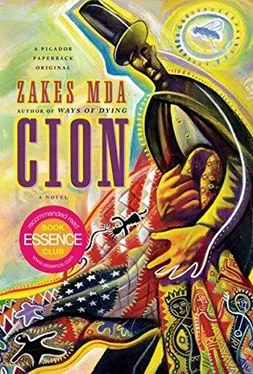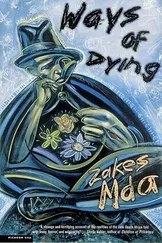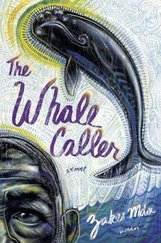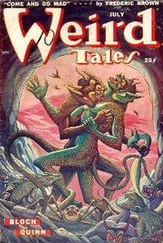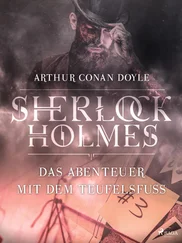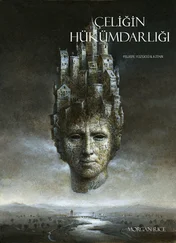Gilkey tells me he is the keeper of the records of the city cemeteries. He was assigned that role by the mayor around 1988 because no one was interested in it. It has been his hobby over the years and it results from his interest in genealogy. His forebears lived in these parts even before the city was established slightly more than two hundred years ago. For the city it is a public relations exercise to let Gilkey help people locate the graves of their loved ones for no fee. He is regarded as an expert in the field. Even the historical society directs people to him.
The process of locating graves is a painless one. Gilkey has records. He got some of these from the State Department of Mental Health and from the psychiatric hospital on West Union Street. After giving him the name and estimated year of death of old Mrs. Quigley he pages through an old book titled Athens Mental Health Center Grave Record #1 Female 1880–1945 . I think the woman will be in this book. Mahlon is about sixty-five years old. The woman was committed while she was pregnant with him. He was actually born at the mental home at The Ridges. He was handed back to the Quigleys when he was about six months old. I think being separated from her baby broke the poor woman’s heart even more and she died a year later.
“Lots of these folks were not crazy at all,” says Gilkey. “Some of them had Alzheimer’s or something that we understand today.”
“I know,” I say. “This one’s madness was that she was Caucasian and fell in love with a colored man from a neighboring village.”
“That was madness all right. Back in the day they were dead scared of intermarriages.”
“It was fine…at least it was tolerated…for guys like the first Tabler and the first Quigley to have colored wives, but for a colored man to have a white wife was a crime. I just wonder what reasons were documented for her committal.”
Gilkey suggests that we can find the committal papers of these patients in the archives at the university. They have an index of all the committal papers on microfiche. From these papers we can see where the patient came from, who committed her and what reasons were given for the committal. I thank him for the offer but tell him that that kind of information is not important for my purposes. All I need is to locate the grave.
Gilkey pages through the book. The names are listed alphabetically with grave numbers next to each name. But there is no Quigley here. I call Ruth.
“I didn’t think you was gonna do it,” she says. “Of course there ain’t no Quigley there. It ain’t the Quigleys who committed her. It’s her own family. They wouldn’t have used no Quigley ’cause they didn’t recognize the marriage. She was of the Tobias family. Margaret Tobias.”
And there is her name with a grave number. She died and was buried in 1943.
“Her grave’s gonna be at Cemetery Number 2,” says Gilkey.
We drive to The Ridges. As the van makes its way on a steep hill I recognize the cemetery I visited that night of the pagans. It is Cemetery Number 1, says Gilkey. Everybody here was buried much earlier than ’43. The graves date from 1880 to 1901. This is the cemetery where people were buried with only numbers on their gravestones. Most families cannot pay respects to their relatives who died condemned as lunatics because there is no information on the graves. They are not aware how easy it is to locate these graves if only they can consult Terry Gilkey.
There is a third cemetery across the lane from the Dairy Barn. All the graves in that one have names and it goes up to 1949 or perhaps 1950—Gilkey can’t quite remember.
At Cemetery Number 2 the grounds are as well kept as in the others — thanks to The Ridges Restoration Project. Half of the graves only have numbers and the rest have names and numbers. Men were buried on one side and women on a separate side. The decorum of the age: no mixing and no hanky-panky even in death.
Margaret Tobias’s grave has no name, but it is not difficult to locate it because of Gilkey’s meticulous records.
“So now that you found it what’re you gonna do with it?” asks Gilkey.
“The relatives will construct a tombstone when they can afford it,” I tell him. “In the meantime I will mourn her death.”
“Hey, she died decades ago,” he says. He thinks I am joking.
“I mourn deaths. Even if they happened centuries ago,” I explain. “I am a professional mourner.”
He still thinks I am joking.
“Like the Aztecs? They used to have this funny guy who stood at the entrance of the pyramids and made a hell of a noise every time somebody died. Until the bereaved came and paid him money.”
“I am that guy.”

Sunday morning. September leaves are falling. Golden. Yellow. Red. The sun is shining starkly through the branches once hidden. The wind playfully picks up the leaves and lets them float in the air before dropping them on the grass. We stand around Margaret Tobias’s grave. There is Ruth in her blue sweats despite the hot weather, Obed in his khaki shorts and red plaid shirt, Orpah and Mahlon, both in denim jeans and T-shirts. I am, of course, in my professional mourner costume of black top hat, black cape and black pants.
The gravestone with the number is under a pile of assorted flowers bought from Kroger. There is a pile of pawpaws with their rough green skins next to the flowers. They are some kind of offering since one of the Native American ancestors used to grow the fruit. This one, however, is from the wild and was brought by Obed a few days ago.
“We should of invited Brother Michael to do them prayers,” says Obed.
“We ain’t gonna taint your grandma with no Brother Michael,” says Ruth. “We all know how to pray.”
Then she goes on to tell us about biracial kids. She is obviously referring to Mahlon because she is looking at him. It is good that her visitor found the grave. Biracial kids need to know their history because biracial kids pick up all sorts of diseases. Blacks give them black diseases such as diabetes and whites give them their own white diseases.
I don’t know why she says Mahlon is biracial. Maybe tri-racial is not in her vocabulary. No one questions her about how locating this grave will help Mahlon escape white diseases. She reminds her small congregation that her people come in all colors of the rainbow, and therefore they are the race of the future. Unfortunately during the days of the very same Margaret Tobias we are honoring today, those who had pale faces and blond hair changed their names and did not want to associate with those of color anymore. They tried to live like Caucasians among Caucasians. But guess what? Many are now coming back to claim their heritage. It is now fashionable to be a person of color.
“And you know why?” she asks looking at each one of us expectantly. But no one wants to provide the answer.
“Because of them programs,” says Ruth.
“It is more like they are drawn back by the ancestors, not some darn programs,” says Obed, getting fed up with his mother’s digressions.
I thought the young man had learned not to contradict Ruth unnecessarily. Otherwise he’ll get her started. Before she can lash out I appeal for calm in both of them. We have come here to return Margaret Tobias’s dignity. The discussion is important, but there will be time for it later.
“Today I am going to mourn for you like I’ve never mourned before,” I tell the small congregation. “Your culture frowns upon excessive display of crying at a funeral. You were taught to be embarrassed to show grief in public. I am therefore going to do it on your behalf. I am hoping that your genes still understand public wailing. After all, some of your ancestors came from Ireland and the Irish have mastered public mourning at wakes. They know how to keen and lament for all the world to witness. When the Irish bereaved can’t do it themselves they hire professional mourners to do it for them. Surely your genes have memory of this? Surely Mahlon’s stories have memory of this?”
Читать дальше
